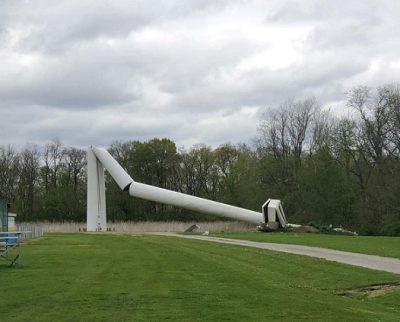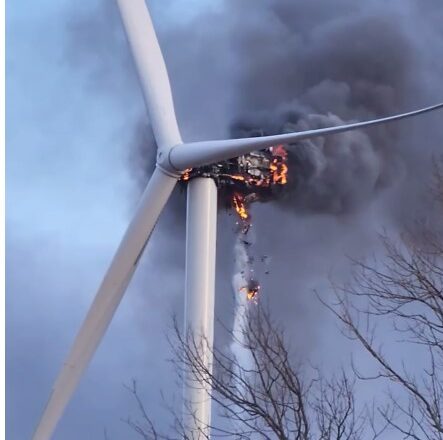In 2022, GE’s renewables division scorched $2 billion, Vestas vaporized $1.68 billion and Siemens Energy said goodbye to $943.48 million. It seems that it’s only the hope that governments might throw a few more taxpayer’s $billions in their direction that keeps these outfits hanging on.
While that might have been a sensible tack to take in the past, with the implosion of Europe’s grand wind and solar ‘transition’ there appears to be little hope of countries like Germany, France and the UK indefinitely shelling out mountains of cash for costly and chaotically intermittent wind power.
Linnea Lueken takes a look at the financial misery that’s beset the wind industry’s biggest operators.
Right, OilPrice.com, Wind Power is Unprofitable
Climate Realism
Linnea Lueken
21 April 2023
A recent article at OilPrice.com explains how wind power is unprofitable, going into detail on some of the economic hurdles that industrial wind power development has encountered. Supply chain problems, inflation, likely the high price of fossil fuels, and other issues have resulted in billions of dollars in losses. Despite this, wind power companies are unconcerned about going bankrupt, due primarily to the fact that governments are mandating that increasing numbers of wind turbines be added to the electric grid in pursuit of net-zero carbon dioxide emissions policies, complete with generous subsidies.
The author of the OilPrice.com article, “Wind Power Has A Profitability Problem,” Felicity Bradstock, points out that despite massive investments and mandated construction by governments leading to growth in the wind power industry, “companies are realizing that it is difficult to translate wind power into profits.” Bradstock says the return on investment has not been what companies expected, writing:
In June last year, there were reports that some of the world’s biggest wind energy companies were battling heavy losses. Vestas Wind Systems, General Electric Co., and Siemens Gamesa Renewable Energy all faced extremely high raw material and logistics costs following the pandemic when supply chains were disrupted. This came after an arms race in which wind majors were competing to build the tallest, most powerful wind turbines at whatever cost would put them ahead of the rest.
Losses were seen across the board in 2022, to the tune of $2 billion for GE’s renewables division, $1.68 billion for the largest turbine manufacturer Vestas, and Siemens Energy lost $943.48 million.
Apparently, though companies are optimistic, in no small part because governments are requiring the use of their products through renewables mandates, “promising” high demand, and “new grants and subsidies are keeping the wind energy industry’s spirits high, and we can expect more incentives for new wind capacity worldwide as other countries and regions introduce their own climate policies.”
The wind industries’ losses are not all that surprising, given the unreliability of the product itself. In multiple posts, Climate Realism has discussed, here, here, and here, for example, wind power’s failure to provide the promised energy to customers.
Climate alarmists and renewables advocates frequently cite the claim that wind power, or renewables in general, are cheaper than fossil fuels, but the reality is different. The intermittent nature of wind power leads to higher grid operating costs. Additionally, the lifespan of these turbines is a lot less than manufacturers claim. In the case of one of Oregon’s largest wind power facilities, Bigelow Canyon, the turbines break down so often that they only survive for half of their purported lifespans. The facility averages output at 27.6 percent of its rated production capacity. Also, when wind turbines aren’t operating, the power must be supplied from elsewhere, most often from fossil fuel powered plants, yet the costs of keeping such plants idled or operating at less than peak levels isn’t charged against the wind facilities, as it should be.
What is clear, is that wind facilities have tremendous upfront capital costs during the construction and installation of the turbines. The OilPrice.com article also confirms that these costs are rising quickly, due to higher materials costs, higher energy costs, supply-chain, and global trade issues.
Despite their tremendous losses, these companies continue to exist, entirely due to intervention by federal and state governments in the form of mandates, tax credits, property tax abatements, subsidies, guaranteed costs pass throughs to ratepayers, and other types of support. As Climate Realism discusses here, “without government subsidies and mandates, wind and solar power would largely be a boutique power supply for the wealthy.”
The public owes news outlets like OilPrice.com a debt of gratitude for reporting on the high costs and limited benefits of wind power. Sadly, most media outlets report on wind power through “rose-colored lenses,” which distort the true costs of wind power. If the technology was really so great, it would be able to compete in the marketplace without continuing government support.
Climate Realism



Why is the DANISH (Australian) Princes going around on whistle stop tours – promoting Wind turbines. Could it be that Vesta is Danish!!!!!
Propaganda keeps flowing from the companies and their entrenched advocates.
Has nobody in the science field or governments noticed that since the flourishing of this form of energy production the weather has gone crazy and not in a good way.
Could all those swirling monsters actually be having an effect on our climate and not in a good way???
Follow the money
Reblogged this on whatyareckon and commented:
We are ALL losers with this climate scam!!!!
“Sadly, most media outlets report on wind power through “rose-colored lenses,” which distort the true costs of wind power”.
Almost got that sentence correct.
It should be along the lines of the media intentionally fail to report the true costs of wind power.